Welcome to Buenos Aires, a city known for its vibrant culture, rich history, and wide variety of birds. Buenos Aires is a birdwatcher’s paradise, from the iconic Magellanic Penguins to the colorful Southern Lapwings to the majestic Andean Condors.
Here, you can observe several species that can’t be seen elsewhere. Whether you’re just getting started in birdwatching or are an experienced birder, you’ll find something to marvel at in Buenos Aires.
29 Birds to Watch in Buenos Aires
If you are a bird lover and you are planning to visit Buenos Aires, you are in for a treat. The capital city of Argentina is home to a diverse and fascinating avifauna, with more than 300 species recorded in its urban and suburban areas.
Here are 29 birds that you can watch in Buenos Aires
1. Sooty Tyrannulet
The sooty Tyrannulet is a bird species belonging to the tyrant flycatchers family. It is a small bird, typically weighing 9 grams and measuring 12 centimeters in length.
The bird is characterized by its gray or brownish-grey and black tail feathers. The sooty Tyrannulet is found in Argentina, Brazil, Uruguay, and in southern Paraguay.
It inhabits primarily wooded regions, such as forests, and is usually seen alone or in small groups. Its diet consists of small insects like flies and ants, which it captures in mid-flight. The sooty tyrannulet plays an essential role in its habitat.
It helps keep insect populations in check and maintains the balance of the local ecosystem. The species is also of great aesthetic value, as it’s bright feathers and coloration make it a beautiful addition to its environment.
| Kingdom | Animalia |
| Phylum | Chordata |
| Class | Aves |
| Order | Passeriformes |
| Family | Tyrannidae |
| Genus | Serpophaga |
| Species | S. nigricans |
2. Shiny Cowbird
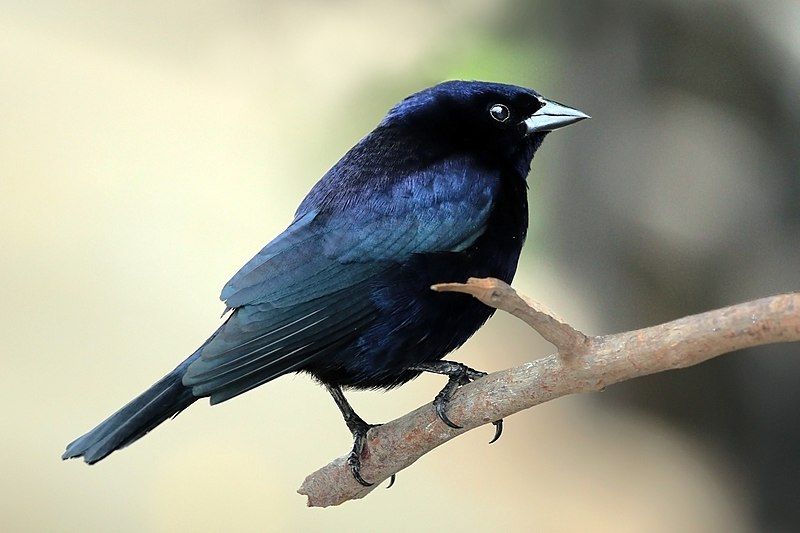
The Shiny Cowbird is a species of bird found in the New World family of Icteridae. It is a passerine, meaning it is a perching bird. This species is found in most parts of South America, except in areas of high altitude such as mountains.
The Shiny Cowbird is an adaptable species and is able to survive in a wide variety of habitats. It is found in grasslands, marshes, and woodlands, and is also found in urban environments, such as parks and gardens.
This species can feed on various food sources, including insects, fruits, and seeds, making it a valuable species for farmers and gardeners. The Shiny Cowbird has been known to breed in colonies, where they form strong social bonds and share resources.
This species is an integral part of the ecosystem, providing valuable pest control and pollination services.
| Kingdom | Animalia |
| Phylum | Chordata |
| Class | Aves |
| Order | Passeriformes |
| Family | Icteridae |
| Genus | Molothrus |
| Species | M. bonariensis |
3. Chimango Caracara
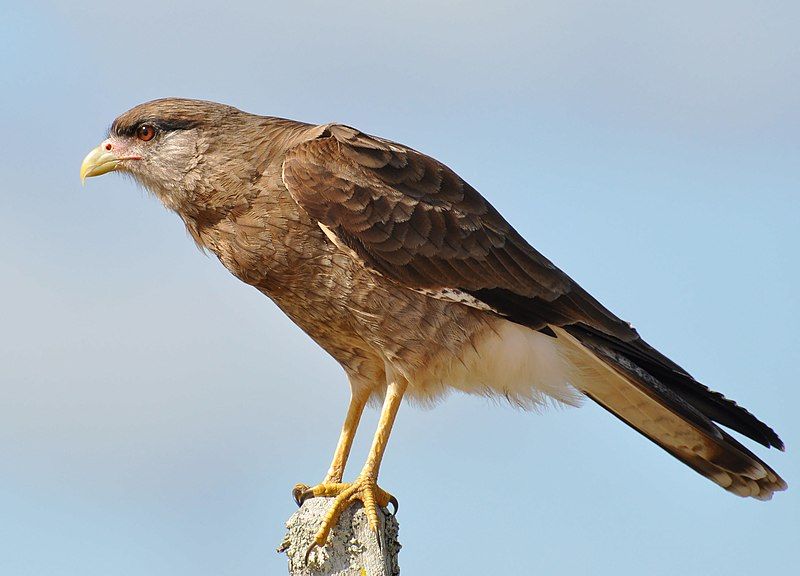
The Chimango Caracara is a species of bird of prey belonging to the Falconidae family of falcons and caracaras. It is found in various parts of South America, such as Argentina, Bolivia, Brazil, Chile, Paraguay, and Uruguay.
It has also been reported as a vagrant on the Falkland Islands. This species has a unique but distinct plumage, with its head and neck being almost entirely white, while the rest of the body is brownish-gray.
Its wings are long and pointed, with its primary feathers tipped black. Its tail is short and fan-shaped, with a white tip, and its legs are long and heavily feathered. The Chimango Caracara is typically found in open country, such as grasslands, savannas, and shrublands.
It is usually solitary but can be seen in mixed flocks with other raptors. It feeds mainly on small mammals, reptiles, insects, and scavenges for food.
The Chimango Caracara is considered to be of least concern by the IUCN Red List of Threatened Species, and its population is currently stable.
| Kingdom | Animalia |
| Phylum | Chordata |
| Class | Aves |
| Order | Falconiformes |
| Family | Falconidae |
| Genus | Milvago |
| Species | M. chimango |
4. Spot-flanked Gallinule
The spot-flanked gallinule is a unique species of bird that belongs to the family Rallidae. It is the sole species in the genus Porphyriops and is found in several countries in South America, including Argentina, Bolivia, Brazil, Chile, Colombia, Paraguay, Peru, and Uruguay.
The spot-flanked gallinule has adapted to various habitats, from swamps and freshwater lakes to marshes and lagoons. It is an aquatic species that prefers shallow, slow-moving bodies of water with plenty of vegetation.
Its diet consists mainly of aquatic insects, larvae, and crustaceans. It also eats some seeds and fruits. The spot-flanked gallinule is typically solitary but may sometimes form small flocks. It is a relatively passive species and rarely migrates.
The spot-flanked gallinule is an integral part of the South American ecosystem. It helps maintain its habitat’s health by consuming insects and larvae and dispersing seeds and fruits.
It is a shy species and can be challenging to observe in the wild, but its distinctive call can be heard echoing through the wetlands.
| Kingdom | Animalia |
| Phylum | Chordata |
| Class | Aves |
| Order | Gruiformes |
| Family | Rallidae |
| Genus | Porphyriops |
| Species | P. melanops |
5. Masked Gnatcatcher
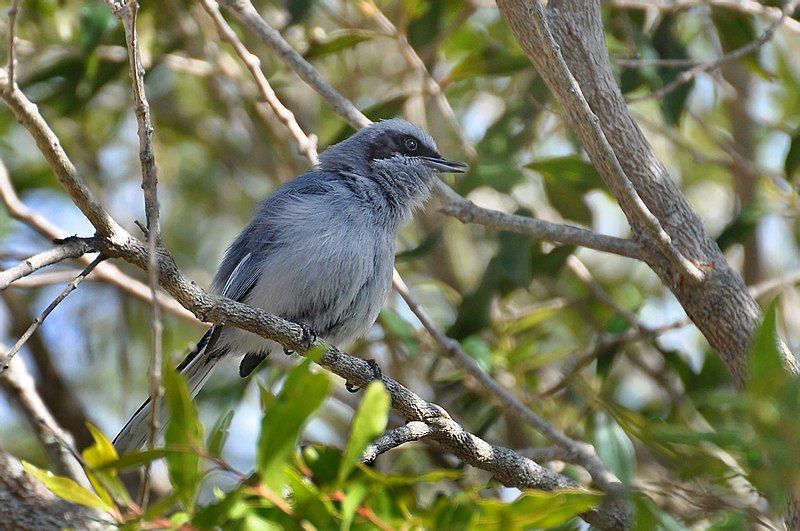
The masked gnatcatcher is a small species of songbird belonging to the Polioptilidae family. It is native to South America and occurs in Argentina, Bolivia, Brazil, Paraguay, and Uruguay.
This species has a grey head with a black mask around the eyes, a white throat, a yellow breast, and a grey back and wings. It is usually found in semi-open habitats such as shrublands, woodland edges, riverbanks, and savannas.
It feeds mainly on insects, and its diet includes spiders, ants, and flies. It is an active, agile species that feeds by either hopping on the ground or hovering over it to catch its prey.
The masked gnatcatcher is an integral part of the ecosystem, helping to keep insect populations in check.
| Kingdom | Animalia |
| Phylum | Chordata |
| Class | Aves |
| Order | Passeriformes |
| Family | Polioptilidae |
| Genus | Polioptila |
| Species | P. dumicola |
6. Chalk-browed Mockingbird
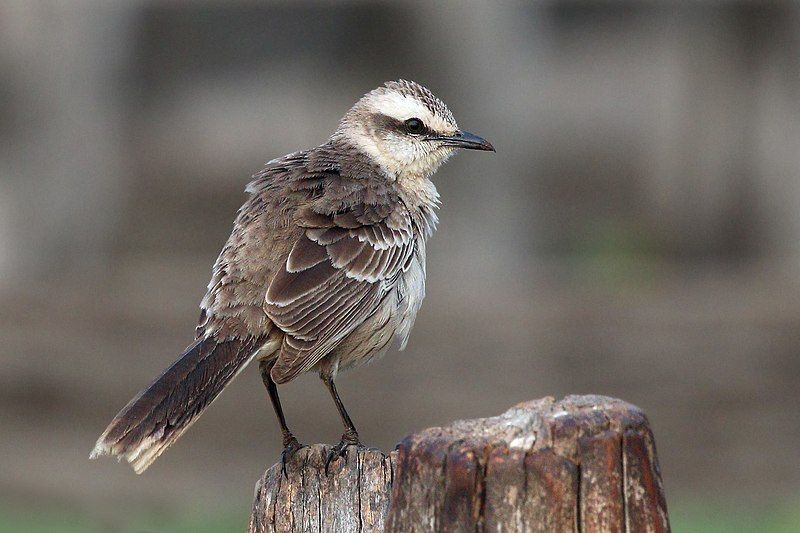
The chalk-browed mockingbird is a species of bird that belongs to the family Mimidae. This species is native to South America and can be found in Brazil, Bolivia, Argentina, Paraguay, Suriname, and Uruguay.
It typically inhabits tropical and subtropical dry and moist forests and areas of savanna and scrubland. The bird is distinguished by its distinctive chalk-gray brow, unique to the species.
Its relatively long tail and light grayish-brown upper parts dotted with white spots also characterize it.
The underparts are white, with grayish patches on the sides of the chest and flanks. The chalk-browed mockingbird has various vocalizations, which it uses to communicate with other members of its species.
Its song is a series of loud, high-pitched whistles, typically lasting for several seconds. It also has a variety of contact calls used between individuals to keep in touch with one another. The species is omnivorous, consisting mainly of insects, fruits, and berries.
It is an important seed disperser and helps to maintain the balance of its local ecosystem. Unfortunately, the species is threatened by habitat loss due to deforestation and urbanization. Conservation efforts are underway to protect this species and its natural habitat.
| Kingdom | Animalia |
| Phylum | Chordata |
| Class | Aves |
| Order | Passeriformes |
| Family | Mimidae |
| Genus | Mimus |
| Species | M. saturninus |
7. Streaked Flycatcher
The streaked flycatcher is a species of bird belonging to the tyrant flycatcher family. This family of birds is part of the order of passerines, or perching birds. Streaked flycatchers are found across much of North America, from Alaska and British Columbia to Mexico.
They have olive-brown backs, white bellies, and a distinctive white eye line. These tiny birds usually breed in open coniferous forests and inhabit deciduous forest areas.
Streaked flycatchers are opportunistic feeders, eating insects, spiders, and other invertebrates. They forage for food by hovering and swooping to catch their prey.
They also feed by perching on branches and snatching insects off of the ground or from foliage. They are territorial during the breeding season and will aggressively defend their territory from other birds.
Streaked flycatchers are an essential part of the ecosystem, helping to keep insect populations in check.
| Kingdom | Animalia |
| Phylum | Chordata |
| Class | Aves |
| Order | Passeriformes |
| Family | Tyrannidae |
| Genus | Myiodynastes |
| Species | M. maculatus |
8. Guira cuckoo
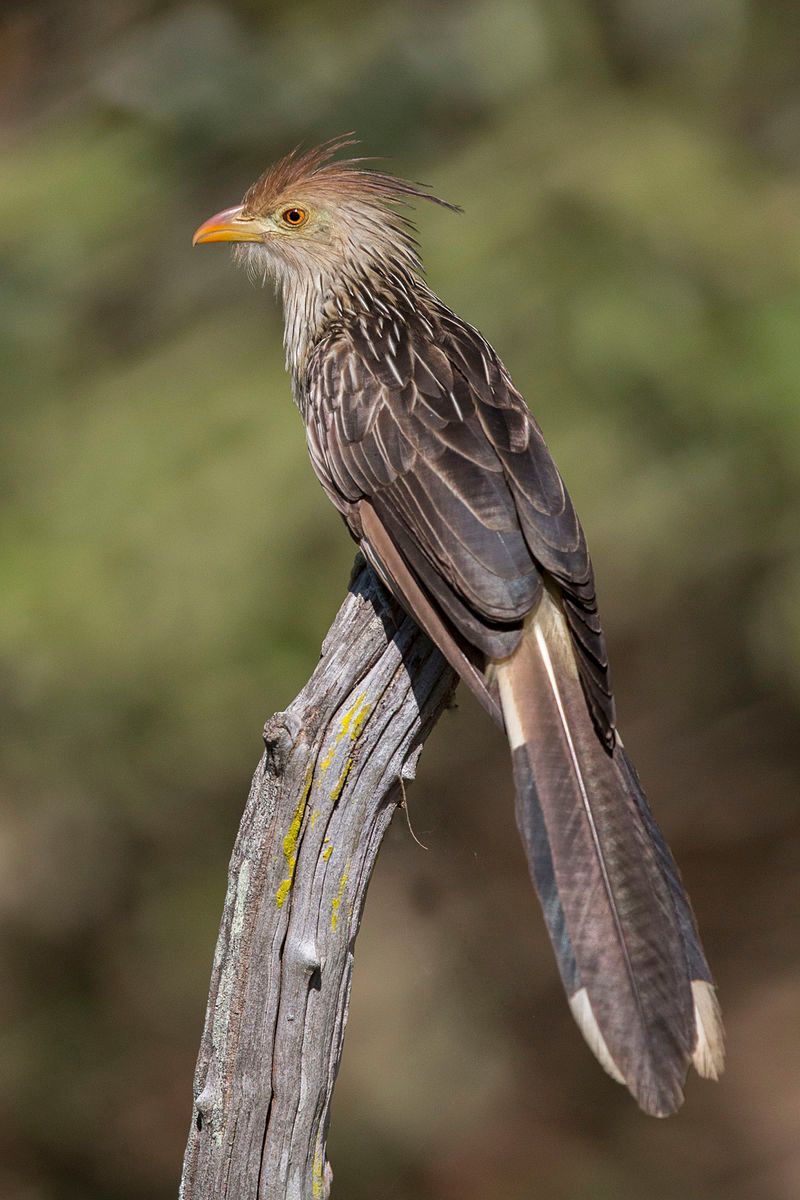
The guiro cuckoo is a bird typically found in large groups in open and semi-open habitats in parts of Brazil, Uruguay, Paraguay, Bolivia, and northeastern Argentina.
This bird is unique and distinct from other species, as it is the only one of its kind placed within the genus Guira. It is usually found in areas with many trees, fields, and grasslands.
The guiro cuckoo has a very distinct look, with its long tail, yellowish-brown feathers, and white stripes on its wings and tail. It also has a loud call that can be heard from far away.
This species is an integral part of the local ecosystem, as it helps to keep insect populations in check and can also help pollinate plants.
| Kingdom | Animalia |
| Phylum | Chordata |
| Class | Aves |
| Order | Cuculiformes |
| Family | Cuculidae |
| Genus | Guira |
| Species | G. guira |
9. Green-barred Woodpecker
The green-barred woodpecker, also known as the green-barred flicker, is a species of bird belonging to the subfamily Picinae of the woodpecker family Picidae.
This species of woodpecker is found in several countries in South America, including Argentina, Bolivia, Brazil, Paraguay, and Uruguay. The green-barred woodpecker is a medium-sized bird with a body measuring around 29 cm in length. Its wingspan is approximately 45 cm.
It has yellowish-green bars on its back and wings, with a white belly, black tail, and head. Its bill is slender and chisel-shaped. The green-barred woodpecker is an insectivorous species known to feed on small invertebrates such as ants, beetles, and termites.
It is a solitary bird usually found in open woodlands and savannahs. It is also known to inhabit palm groves and is occasionally found in suburban areas.
| Kingdom | Animalia |
| Phylum | Chordata |
| Class | Aves |
| Order | Piciformes |
| Family | Picidae |
| Genus | Colaptes |
| Species | C. melanochloros |
10. Great kiskadee
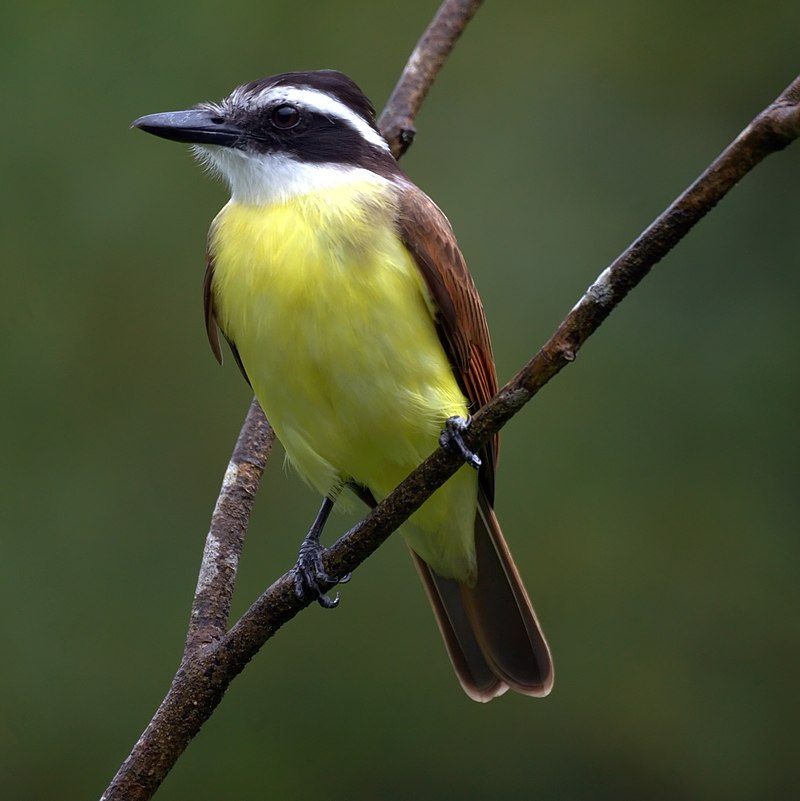
The great kiskadee is a type of passerine bird belonging to the tyrant flycatchers known as Tyrannidae. It is the only bird of its kind found in the genus Pitangus.
It is called bem-te-vi in Brazil, pitogue in Paraguay, and benteveo in Argentina.The great kiskadee lives in open woodland areas with taller trees, such as cultivated land or areas close to human habitation.
It prefers to live in places with plenty of trees and other plants and an abundance of insects and other food sources. The kiskadee is an omnivore, meaning it eats both plants and animals.
It is known for its loud and recognizable call, which it uses to communicate with other birds in its flock or to alert other birds of its presence in its territory. The great kiskadee is an essential species in its habitat, as it helps to keep the insect population in check.
It is also an essential food source for other animals, such as snakes and hawks. In addition, the great kiskadee is a vital seed disperser, as its droppings contain the seeds of many plants.
This helps ensure the survival of local vegetation as the bird spreads the seeds throughout its territory. The great kiskadee is a vital species to its habitat, and its presence is essential to maintaining its ecosystem.
Its loud call and ability to disperse seeds make it an essential part of the local environment. Without the great kiskadee, many areas would be much poorer in biodiversity.
| Kingdom | Animalia |
| Phylum | Chordata |
| Class | Aves |
| Order | Passeriformes |
| Family | Tyrannidae |
| Genus | Pitangus |
| Species | P. sulphuratus |
11. Spix’s Spinetail
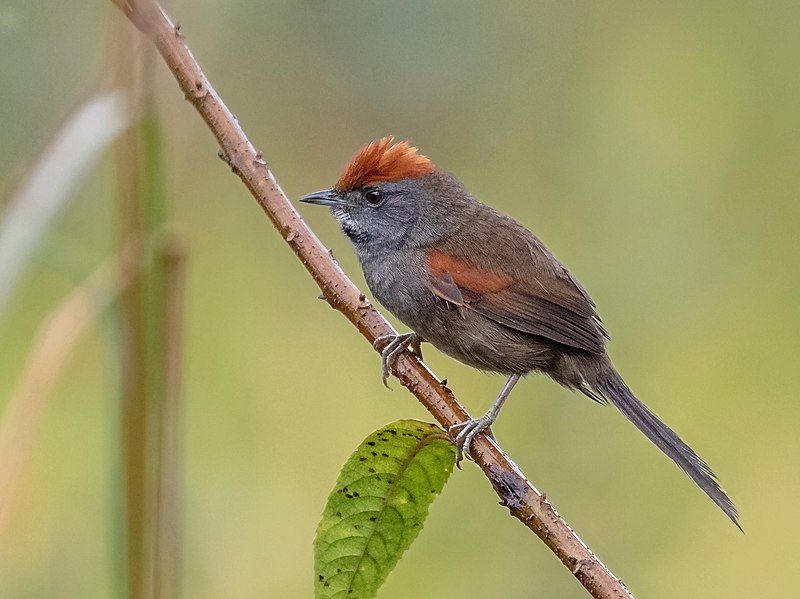
Spix’s spinetail is a species of bird belonging to the family Furnariidae, commonly known as the ovenbirds. This species is found in the Neotropical regions of Brazil, Argentina, and Uruguay.
It was named after the German naturalist Johann Baptist von Spix, an early explorer of the Amazon region who documented the area’s natural history. The species is also known as the Chicli spinetail, and its scientific name is Synallaxis spixi.
The Spix’s spinetail is a medium-sized bird, typically about 14 cm long, with primarily brown plumage and a greyish-brown crown. It has a long, narrow tail tipped with white and a broad, black line running along the side of its head.
Its diet consists mainly of insects, which it forages in undergrowth.
It is a shy and wary bird usually seen singly or in pairs, rarely in larger groups. The range of the Spix’s spinetail is mainly limited to the Neotropical region in Brazil, Argentina, and Uruguay.
It is found in wooded habitats such as humid forests and plantations, mangrove edges, and savannas. However, it is becoming increasingly rare due to habitat loss and hunting.
This species is listed as near-threatened by the IUCN, and conservation efforts are being made to protect it.
| Kingdom | Animalia |
| Phylum | Chordata |
| Class | Aves |
| Order | Passeriformes |
| Family | Furnariidae |
| Genus | Synallaxis |
| Species | S. spixi |
12. Grey-breasted Martin
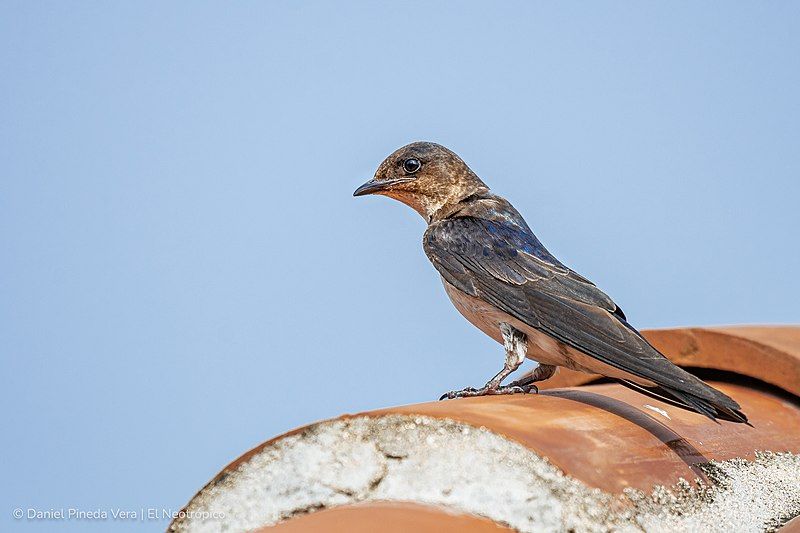
The grey-breasted martin is a species of swallow found in parts of Central and South America. This swallow species is large, measuring up to 7 inches in length and weighing up to 1.3 ounces.
The grey-breasted martin has distinctive grey and white feathers on its breast and black upperparts and white underparts. Its tail is forked, and its wings are pointed and long. This swallow species can be found in open woodland, farmlands, and grassland habitats.
They are usually seen in small flocks and often travel long distances in search of food sources. This swallow species feeds mainly on flying insects, which it captures during flight.
The grey-breasted martin is a migratory bird that migrates from its breeding grounds in Central and South America to its wintering grounds in the Caribbean.
The grey-breasted martin is an essential bird species in its range, and it is considered to be of least concern by the IUCN Red List.
This swallow species is not considered to be threatened, and its population is believed to be stable. It is an essential species in its range, and it helps control insect populations and provides food for other species of birds.
| Kingdom | Animalia |
| Phylum | Chordata |
| Class | Aves |
| Order | Passeriformes |
| Family | Hirundinidae |
| Genus | Progne |
| Species | P. chalybea |
13. Eared Dove
The eared dove is a species of dove found in the New World. It is native to South America, from Colombia to the southern tip of Argentina and Chile, as well as the islands from the Grenadines southwards.
This species may have only recently colonized the islands of Tobago and Trinidad. These birds are resident breeders, meaning they live in the area all year round and do not migrate.
They typically inhabit open woodlands, savannas, and grasslands, feeding on the ground on seeds and small insects. They are monogamous and will usually stay with the same partner for life.
The male and female share in the incubation of their eggs and the raising of their young.
| Kingdom | Animalia |
| Phylum | Chordata |
| Class | Aves |
| Order | Columbiformes |
| Family | Columbidae |
| Genus | Zenaida |
| Species | Z. auriculata |
14. Rufous-bellied Thrush
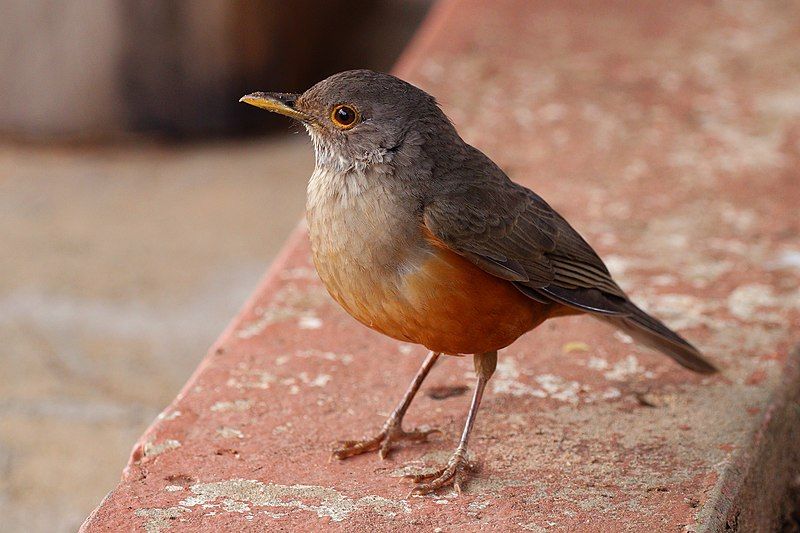
The rufous-bellied thrush is a member of the thrush family and is found in a large part of South America. It can be found in most of Brazil’s eastern and southeastern states, stretching from Maranhão to Rio Grande do Sul.
In addition, it is found in Bolivia, Paraguay, Uruguay, and the central regions of Argentina. This bird species is known for its beautiful song, which can be heard throughout the region during the spring and summer.
Its distinctive red-brown belly gives it a unique appearance that is easily recognizable among other species of birds. The rufous-bellied thrush prefers to inhabit humid forests, usually along the edges of streams and rivers.
Here, it feeds on insects, other small animals, fruits, and other plant matter. In recent years, the rufous-bellied thrush has been facing increasing threats due to the destruction of its natural habitats and the introduction of foreign species to its range.
As a result, its population has been steadily declining, and conservation efforts are needed to protect this species.
Nonetheless, the rufous-bellied thrush is still a common sight throughout its range, and its beautiful song can still be heard, a reminder of the beauty of nature and the importance of protecting its inhabitants.
| Kingdom | Animalia |
| Phylum | Chordata |
| Class | Aves |
| Order | Passeriformes |
| Family | Turdidae |
| Genus | Turdus |
| Species | T. rufiventris |
15. Rufous-collared Sparrow
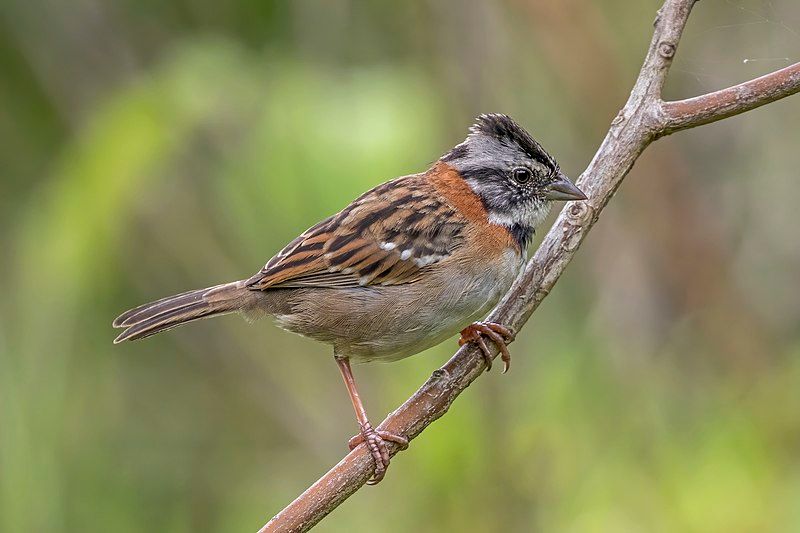
The rufous-collared sparrow, also known as the Andean sparrow, is a mall bird species in South and Central America. This sparrow is known for its ability to adapt to many habitats, often near humans.
It can be found from the extreme southeast of Mexico to the southern tip of South America in Tierra del Fuego and on the Caribbean island of Hispaniola. The rufous-collared sparrow is characterized by its rusty-colored collar, contrasting with its otherwise pale-brown plumage.
The bird is small, about 16 cm long, and weighs around 25 grams.
Its diet mainly consists of various seeds and insects, which can be found in multiple habitats such as gardens, pastures, and even city parks. This sparrow species is often seen in flocks of up to fifty individuals, and they are known to form strong bonds with each other.
They are also known to be quite vocal, often making chirping sounds and whistles. The rufous-collared sparrow is an important species for humans as it disperses various types of seeds.
This allows plants to spread over more significant areas and helps to maintain healthy ecosystems. As a result, this species has become a popular target for conservation efforts.
| Kingdom | Animalia |
| Phylum | Chordata |
| Class | Aves |
| Order | Passeriformes |
| Family | Passerellidae |
| Genus | Zonotrichia |
| Species | Z. capensis |
16. Brown-hooded Gull
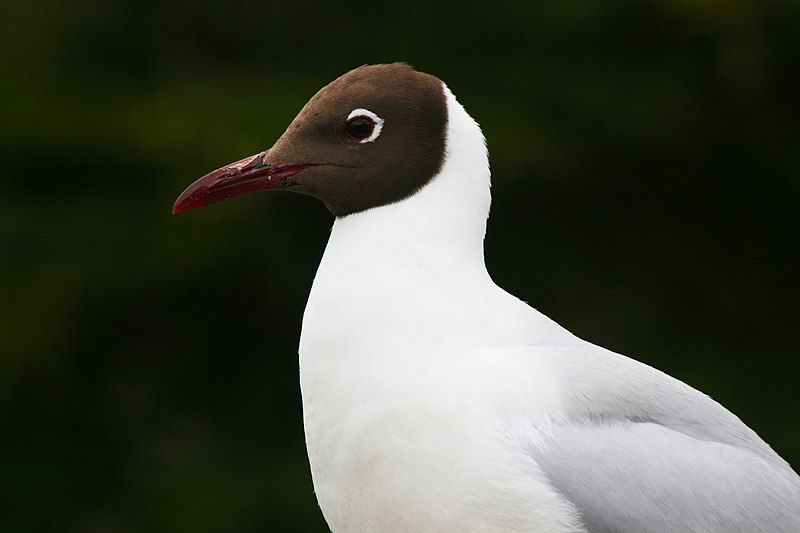
The brown-hooded gull is a species of gull found in South America. It is characterized by its “spotted wings,” derived from its scientific name, maculipennis. This gull species has a white body, a brown head, a red beak, and feet.
It can be found in Argentina, Brazil, Chile, the Falkland Islands, and Uruguay. This gull species has many unique features that make it stand out. Its brown head helps to give it a distinctive look, as does its red beak and feet.
Additionally, the brown-hooded gull can be identified easily by its spotted wings, a feature mentioned in its scientific name, maculipennis. The brown-hooded gull is an essential member of the avian community in South America.
It feeds on small fish, crustaceans, and other marine life. It is a migratory species, meaning it will travel long distances to find food and suitable nesting sites. The brown-hooded gull can also be seen in large flocks on beaches and other shorelines.
The brown-hooded gull is an important species for many countries in South America. It is an integral part of the food chain and helps balance other species’ populations.
It is also an essential part of the tourism industry, as many people come to South America to view the distinctive brown-hooded gulls in their natural environment.
| Kingdom | Animalia |
| Phylum | Chordata |
| Class | Aves |
| Order | Charadriiformes |
| Family | Laridae |
| Genus | Chroicocephalus |
| Species | C. maculipennis |
17. White-rumped swallow
The white-rumped swallow is a type of bird belonging to the Hirundinidae family. It was first described and given its scientific name by ornithologist Louis Vieillot in 1817. For a long time, it was believed to be a subspecies of the Chilean swallow.
It is a monotypic species, meaning that it has no known population variations. This means it has a single, uniform population and no distinctive or unique populations separate from the leading group.
The white-rumped swallow is easily recognizable due to its distinctive white rump. It is a small, migratory bird in various habitats, including grasslands, wetlands, and woodlands.
It feeds mainly on insects, making it a beneficial bird for agricultural and environmental purposes.
| Kingdom | Animalia |
| Phylum | Chordata |
| Class | Aves |
| Order | Passeriformes |
| Family | Hirundinidae |
| Genus | Tachycineta |
| Species | T. leucorrhoa |
18. Picazuro Pigeon
The picaro pigeon is a species of bird native to South America. It is one of the most widely distributed pigeons on the continent, occurring in a wide range of habitats from northern Mexico to northern Argentina.
The picaro pigeon is a medium-sized bird with a yellow bill, reddish-brown wings, and a bronze-green body. It has a distinctive white patch on its neck, and its tail feathers are reddish-brown.
The picaro pigeon is found in open woodlands, grasslands, and other open habitats, and it is also found in urban environments. It feeds on various plant material and some invertebrates and small vertebrates.
The picaro pigeon is an integral part of the food web in its native habitat, serving as a food source for many other species. In addition, picaro pigeons are known to disperse seeds of various plants throughout their range.
The picaro pigeon is a protected species in many countries throughout its range, and it is essential to preserve its habitat to ensure its survival.
| Kingdom | Animalia |
| Phylum | Chordata |
| Class | Aves |
| Order | Columbiformes |
| Family | Columbidae |
| Genus | Patagioenas |
| Species | P. picazuro |
19. Snail kite
The snail kite is part of the Accipitridae family, which includes eagles, hawks, and Old World vultures. The snail kite is related to the slender-billed kite, which has been reclassified to be part of the genus Helicolestes.
As a result of this change, the genus Rostrhamus is now monotypic, meaning it contains only one species. The Accipitridae family is a large family of birds of prey with a wide range of species that can be found worldwide.
These birds of prey are typically carnivorous and can be found hunting for food in open areas. The snail kite is mainly found in tropical and subtropical wetlands, looking for food, such as snails, aquatic insects, and amphibians.
The slender-billed kite is a species that is closely related to the snail kite, but it was recently reclassified to be part of the genus Helicolestes.
This means that the genus Rostrhamus, which previously contained both species, now consists of just one species, the snail kite. As a result, the genus Rostrhamus is now monotypic. In conclusion, the snail kite is a bird of prey that belongs to the Accipitridae family.
Its relative, the slender-billed kite, has been reclassified to be part of the genus Helicolestes, making the genus Rostrhamus monotypic. This change has resulted in the snail kite being the only species within the genus Rostrhamus.
| Kingdom | Animalia |
| Phylum | Chordata |
| Class | Aves |
| Order | Accipitriformes |
| Family | Accipitridae |
| Genus | Rostrhamus |
| Species | R. sociabilis |
20. Long-winged Harrier
The long-winged harrier is a bird of prey native to South America. It is part of the Accipitridae family, and its genus, Circus, also includes other harrier species. The harrier’s range extends across all of South America, from the grasslands to the wetlands.
They are commonly seen hunting and soaring through the skies of South America. The long-winged harrier is an impressive bird with a wingspan of almost a meter. It has a sharp, curved beak perfect for hunting small mammals such as rabbits and rodents.
Its eyes are very sharp and can spot prey from afar. The long-winged harrier is also a very agile hunter, with its long wings allowing it to maneuver quickly and catch its prey. The long-winged harrier has adapted to its environment in many ways.
It can take advantage of the various climates across South America, from the grasslands to the wetlands. Its varied diet includes small mammals, reptiles, birds, and insects.
It is also able to survive harsh winters and make use of the summer months to breed. The long-winged harrier is an integral part of the South American ecosystem.
It helps to control the population of small mammals, which helps maintain a healthy balance in the environment.
It is also essential for the locals, as it helps control pests and scavenge food scraps left behind. The long-winged harrier is a fantastic bird of prey endemic to South America.
It has adapted to its environment, and its range extends from the grasslands to the wetlands. It is an integral part of the South American ecosystem and helps maintain a healthy environmental balance.
| Kingdom | Animalia |
| Phylum | Chordata |
| Class | Aves |
| Order | Accipitriformes |
| Family | Accipitridae |
| Genus | Circus |
| Species | C. buffoni |
21. White-winged Coot
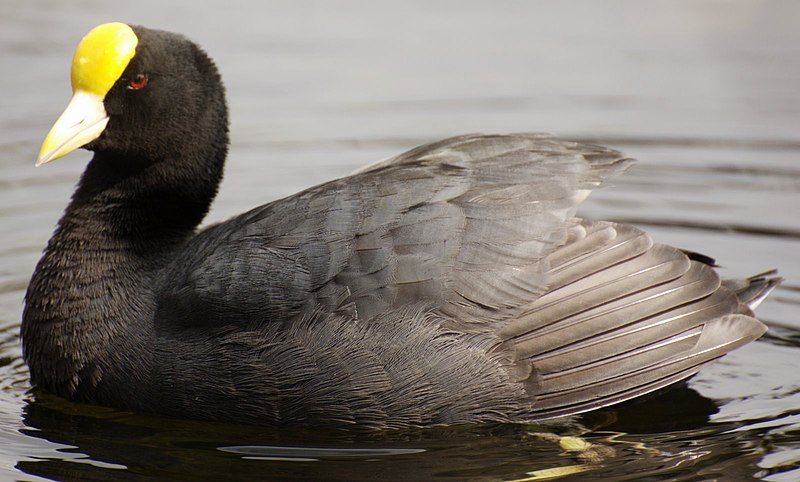
The white-winged coot is a species of bird belonging to the subfamily Rallinae of the family Rallidae. This family includes rails, gallinules, and coots, and the white-winged coot is one of this group’s most distinctive and identifiable members.
It is native to much of South America, including Argentina, Bolivia, Brazil, Chile, Paraguay, Uruguay, and the Falkland Islands. The bird is easily recognized by its white wings, which are visible during flight, as well as its black body and head.
It is also known for its large yellow bill and bright red eyes. The white-winged coot is an omnivorous species, feeding on various plants, invertebrates, and small fish. They typically inhabit shallow wetlands like lagoons, streams, and marshes.
They are also commonly seen near agricultural areas, where they forage for food. White-winged coots are social birds, often found in large flocks. They also migrate seasonally to more suitable habitats during the colder months.
| Kingdom | Animalia |
| Phylum | Chordata |
| Class | Aves |
| Order | Gruiformes |
| Family | Rallidae |
| Genus | Fulica |
| Species | F. leucoptera |
22. Yellow-winged Blackbird
The yellow-winged blackbird (Icteridae) is a species of bird found in several South American countries, including Argentina, Bolivia, Brazil, Chile, Paraguay, Peru, and Uruguay. This bird typically inhabits wetlands, intertidal marshes, and pastures.
It is also sometimes found in agricultural areas and along the coasts. The yellow-winged blackbird is a medium-sized species with a black body, yel, low wings, and tail. The yellow patch on their wings is particularly noticeable during flight.
The underside of their wings is also yellow.
In terms of diet, they mainly feed on insects, other invertebrates, and some grains and seeds. This species is generally common throughout its range and is considered to be of least concern by the International Union for Conservation of Nature (IUCN).
The primary threat to the yellow-winged blackbird is the destruction and alteration of its natural habitats due to human activities such as agricultural expansion, draining of wetlands, and so on.
As a result, it is essential to protect the remaining habitats of this species to ensure its continued survival.
| Kingdom | Animalia |
| Phylum | Chordata |
| Class | Aves |
| Order | Passeriformes |
| Family | Icteridae |
| Genus | Agelasticus |
| Species | A. thilius |
23. Hudson’s Canastero
Hudson’s canastero is a species of bird belonging to the Furnariidae family. This species is native to the temperate grasslands of Argentina, Brazil, Paraguay, and Uruguay.
It was named after Argentine-British ornithologist William Henry Hudson, the first to describe the species. The bird is usually found in humid grasslands and pastures but also inhabits bushy areas, scrublands, and agricultural fields.
It feeds mainly on seeds, insects, and spiders and can fly for up to 10 kilometers in search of food.
Its habitat is threatened by the destruction of grasslands due to agricultural expansion, and it is listed as a Near Threatened species on the IUCN Red List. Hudson’s canister is a small bird with a brown-gray back, white throat, and whitish underparts.
It has rufous wings, a tail, and a buff-streaked crown. It is a solitary species, and it is usually seen in pairs or small groups. It is an elusive species, and it is not often seen in its natural habitat.
However, its characteristic song can be heard in its grassland habitat. Overall, Hudson’s canister is a species of bird found in South America with a fascinating history.
It is named after the Argentine-British ornithologist William Henry Hudson, who was the first to describe the species. It is a small bird with a brown-gray back, white throat, and whitish underparts. It is a solitary species, and it is usually seen in pairs or small groups.
Unfortunately, its habitat is threatened by the destruction of grasslands due to agricultural expansion, and it is listed as a Near Threatened species on the IUCN Red List.
| Kingdom | Animalia |
| Phylum | Chordata |
| Class | Aves |
| Order | Passeriformes |
| Family | Furnariidae |
| Genus | Asthenes |
| Species | A. hudsoni |
24. Roadside Hawk
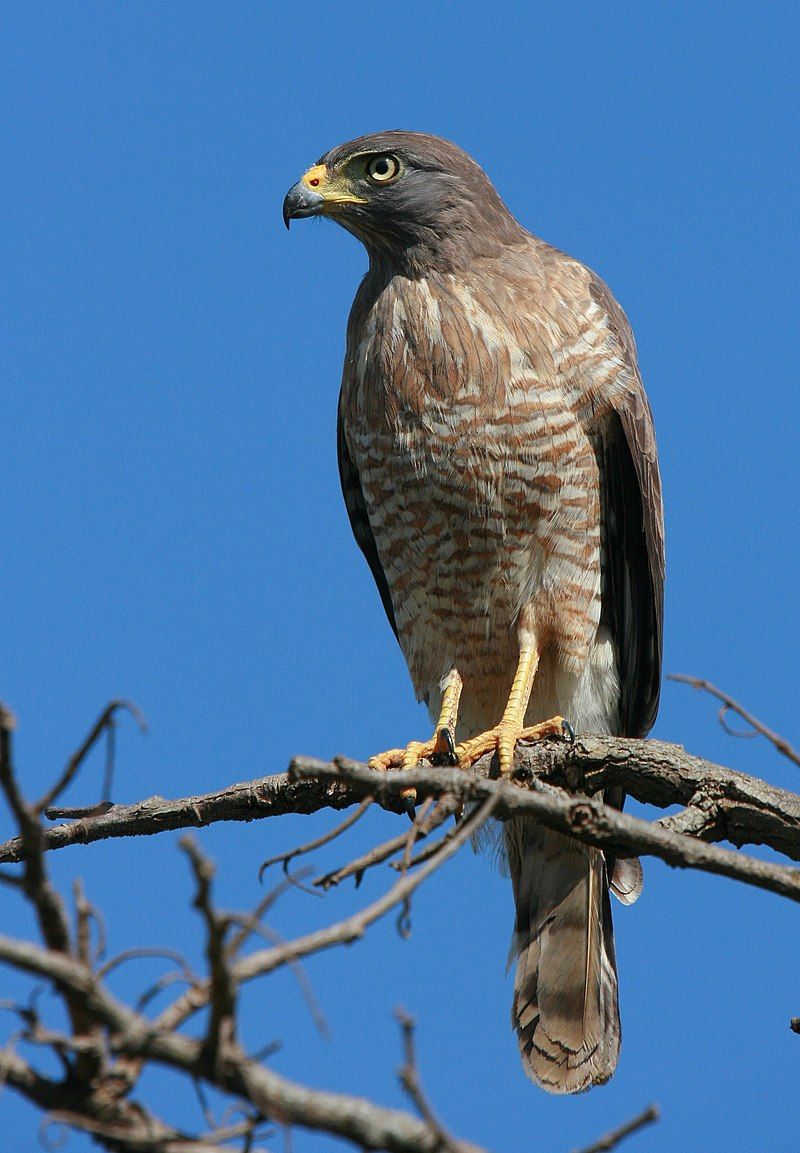
The Roadside Hawk is a bird of prey found throughout the Americas. It is pretty small but is often the most common raptor in its range. This vocal species is a highly recognizable bird and is generally placed in its genus, Rupornis, rather than the Buteo genus.
It is further divided into different subspecies, each with unique features and attributes. For example, the Black-chested Buzzard-Eagle is a subspecies of the Roadside Hawk found in Central and South America.
This species has a black chest and a light-colored head, but its wings are darker than other subspecies. The Roadside Hawk is a very adaptable species known to inhabit a wide range of habitats, from open grasslands and savannas to urban areas.
It is an opportunistic feeder and will hunt for prey, including small mammals, lizards, insects, and carrion. It is also known to steal prey from other raptors. This species is a strong flier known to migrate over long distances.
Overall, the Roadside Hawk is a unique and exciting species that plays a vital role in its environment. Its adaptability and wide range make it an essential part of many ecosystems.
| Kingdom | Animalia |
| Phylum | Chordata |
| Class | Aves |
| Order | Accipitriformes |
| Family | Accipitridae |
| Genus | Rupornis |
| Species | R. magnirostris |
25. Grayish Baywing
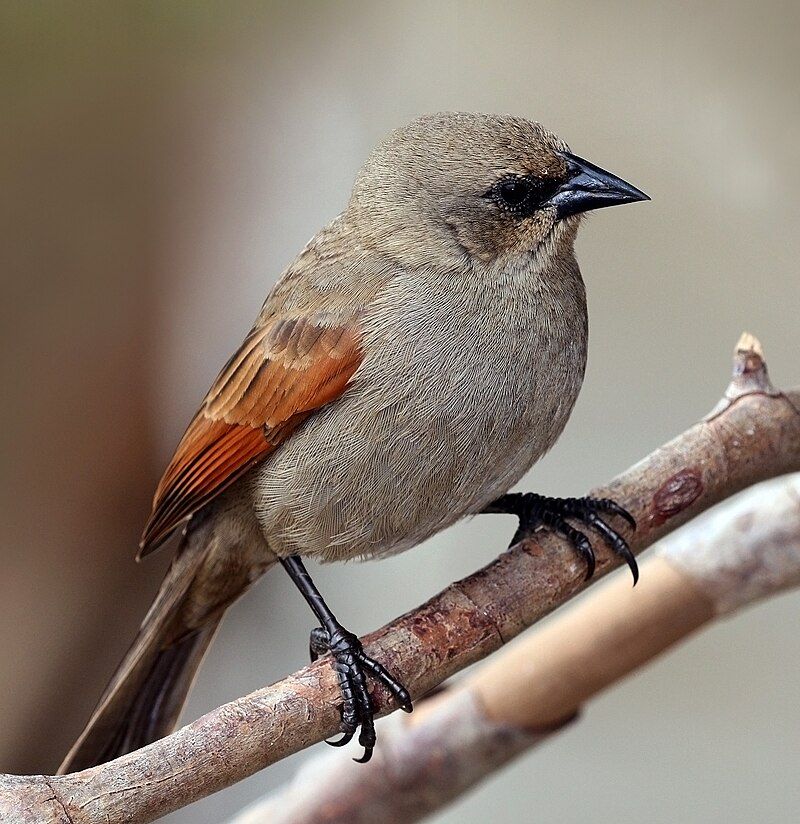
The grayish baywing is a species of bird from the family Icteridae, a group of birds known for their black feathers and yellow beaks. The baywing is also known as the bay-winged cowbird and is currently placed in the genus Agelaioides.
This is a recent change, as the baying was traditionally placed in the genus Molothrus. The baying is a medium-sized bird with brown, gray, and black feathers and a black and yellow beak. It has a distinctive call, typically a low, warbling sound.
The baying has a wide range and can be found in open woodlands, grasslands, and other habitats across South and Central America. They typically feed on insects, fruit, and seeds.
The baying is an essential species in its native ecosystem, as it helps to disperse seeds and control insect populations.
| Kingdom | Animalia |
| Phylum | Chordata |
| Class | Aves |
| Order | Passeriformes |
| Family | Icteridae |
| Genus | Agelaioides |
| Species | A. badius |
26. Crested Caracara
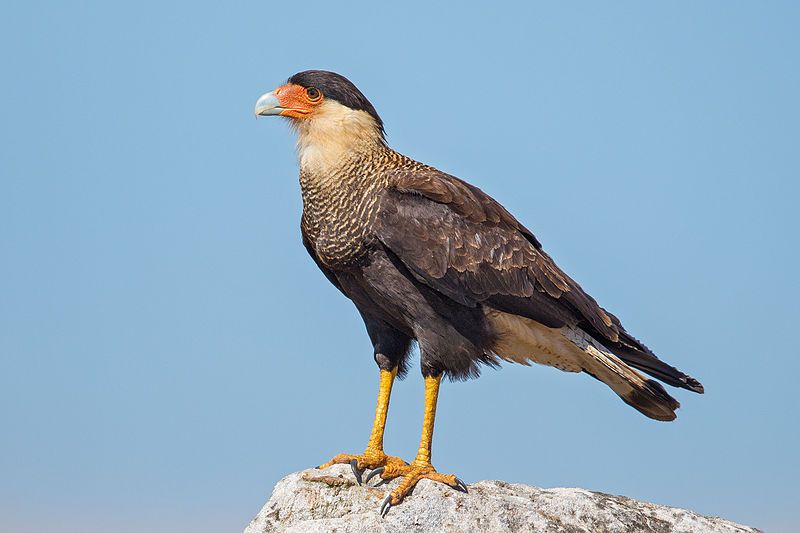
The crested caracara is a large bird of prey that belongs to the falcon family. It is native to Central and South America and found in northern Minnesota and Tierra del Fuego.
This bird is distinctive in its appearance, with a distinct crest of feathers on its head. It is usually seen perched atop trees or poles, scanning for prey. Its diet consists mainly of carrion, small animals, and some fruits and seeds.
It is an excellent hunter, able to take down prey much more significant than itself. Until recently, the crested caracara was placed in the genus Polyborus.
However, recent genetic evidence has shown that it belongs to the Caracara genus. As such, it is now classified as Caracara plancus.
This bird has a wide geographic range and is quite common in many parts of its range. However, it is listed as threatened in some areas due to habitat loss and hunting. Conservation efforts are being made to help protect this species from further decline.
| Kingdom | Animalia |
| Phylum | Chordata |
| Class | Aves |
| Order | Falconiformes |
| Family | Falconidae |
| Genus | Caracara |
| Species | C. plancus |
27. Tropical Screech Owl
The tropical screech owl is a species of owl that belongs to the family Strigidae. It is a small owl with a 6-10 inches body length. Its wingspan is around 16-20 inches. This species of owl is found in various countries in Central and South America.
Specifically, it is found in Costa Rica, Panama, Trinidad, and every mainland country in South America. This owl species is usually found in tropical and subtropical forests, such as rainforests, deciduous forests, and cloud forests.
It is also known to inhabit wooded areas, such as plantations, gardens, and parks. It is usually found near water sources, such as rivers, lakes, and wetlands.
The diet of this species consists mainly of small mammals, such as mice, rats, and shrews, as well as invertebrates, such as insects and spiders. This owl species is also known to feed on small birds and reptiles.
The tropical screech owl is an essential species in the ecosystem, as it helps to control populations of small mammals and invertebrates.
| Kingdom | Animalia |
| Phylum | Chordata |
| Class | Aves |
| Order | Strigiformes |
| Family | Strigidae |
| Genus | Megascops |
| Species | M. choliba |
28. Glittering-bellied Emerald
The Glittering-bellied Emerald is a unique species of hummingbird found in South America. It is a part of the Trochilini tribe and the Trochilinae subfamily. This beautiful species can be spotted in Argentina, Bolivia, Brazil, Paraguay, and Uruguay.
It is known for its emerald-green body and its glittering belly. It is a medium-sized hummingbird whose wingspan ranges between 7.5 cm and 8 cm. The Glittering-bellied Emerald is a nectarivore, meaning it mainly feeds on the nectar of flowers.
Its diet also consists of small insects, spiders, and other invertebrates. This species is usually found in woodlands, forests, and gardens. It prefers to stay near the ground and usually avoids open areas.
Its bright colors help it to stand out from its surroundings, making it easier for other hummingbirds to spot.
| Kingdom | Animalia |
| Phylum | Chordata |
| Class | Aves |
| Clade | Strisores |
| Order | Apodiformes |
| Family | Trochilidae |
| Genus | Chlorostilbon |
| Species | C. lucidus |
29. Ferruginous Pygmy Owl
The ferruginous pygmy owl is a small owl native to the Americas.
It is found in south-central Arizona and southern Texas in the United States, as well as further south, reaching Mexico and Central America, and even further down to South America in Brazil, Bolivia, Paraguay, and Argentina.
This owl is found in various habitats, such as arid scrub, dry deciduous forests, and riparian woodlands. It feeds mainly on small mammals, such as rodents, reptiles, and insects.
Its plumage is distinctive, with a white throat, white underparts, and a reddish-brown back. The ferruginous pygmy owl is considered the most minor concern by the International Union for the Conservation of Nature, as its population is believed to be stable.
| Kingdom | Animalia |
| Phylum | Chordata |
| Class | Aves |
| Order | Strigiformes |
| Family | Strigidae |
| Genus | Glaucidium |
| Species | G. brasilianum |
Conclusion
Birds in Buenos Aires represent a unique and diverse range of species, habitats, and behaviors. From the colorful parrots of the city’s parks to the migratory birds of the wetlands, the birds of Buenos Aires are a source of beauty and wonder for locals and visitors alike.
The city is home to various conservation efforts, birdwatching activities, and several bird-friendly parks that provide sanctuary for these feathered friends.
All of these factors combine to make Buenos Aires a great place to observe and appreciate the beauty and diversity of birds.